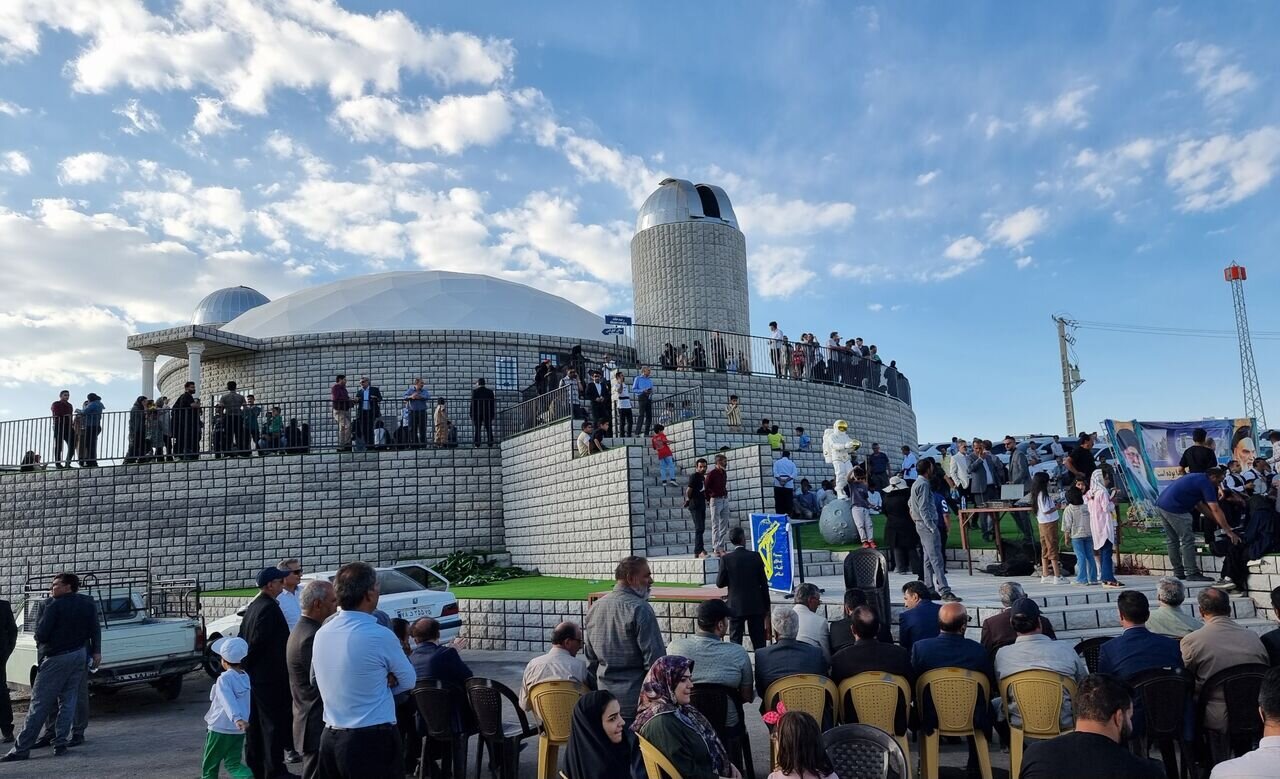Iran’s highest observatory launched in Kerman province

TEHRAN – On Friday evening, the Bam-e Behesht Observatory, recognized as the third-largest in Iran and the highest of its kind, was officially inaugurated in Sarduiyeh district of Jiroft, southern Kerman province.
Speaking at the launch event on Friday, Seyyed Ahmad Fatemi, CEO of an investment company, highlighted the significance of the new facility. He noted that there is only one observatory higher than this one in the country, but it is primarily used for research purposes.
“This observatory is situated 2,800 meters above sea level and is equipped for day and night observation,” Fatemi stated.
“It is equipped with a specialized telescope that allows us to observe activities within the sun during the day, as well as planets and celestial bodies that are invisible to the naked eye.”
Fatemi added that the observatory provides a clearer view of the sky's phenomena, enhancing the public's understanding of the universe.
The observatory complex offers several facilities, including an amphitheater, a library, a restaurant, and areas for both day and night sky viewing. It also features a planetarium with a rotating dome that focuses on planets for detailed observation.
Fatemi revealed that the initial phase of the project required an investment of 570 billion rials (some $950,000) and has created employment for 42 people, emphasizing that all the workers are local to the area.
“We are committed to hiring only local staff because the people in this region face economic hardships,” he added.
Kerman is something of a cultural melting pot, blending various regional cultures over time. It is bounded by the provinces of Fars in the west, Yazd in the north, South Khorasan in the northeast, Sistan-Baluchestan in the east, and Hormozgan in the south. It includes the southern part of the central Iranian desert, the Dasht-e Lut, which has long been a destination for stargazers.
Glimpses of Iran’s 13th-century observatory
Constructed in the mid-13th century under the patronage of Hulagu Khan, the grandson of Genghis Khan, Maragheh observatory is the oldest existing one in the country. Hulagu Khan selected Persian polymath Nasir al-Din al-Tusi as the director of the observatory, which is located in northwest Iran.
According to the UNESCO Astronomy and World Heritage Webportal, Maragheh observatory represented a new wave of scientific activities in the Islamic world in the 13th century, it had a key role in the development of some sophisticated pre-Copernican non-Ptolemaic systems for explaining the planetary motions, and it was the model for several observatories that were built in Persia, Transoxiana, and Asia Minor up to the 17th century.
Experts say ideas initiated by the Maragheh school created a considerable impact beyond the Islamic territories and influenced the astronomical revolution of the 16th century.
AM
